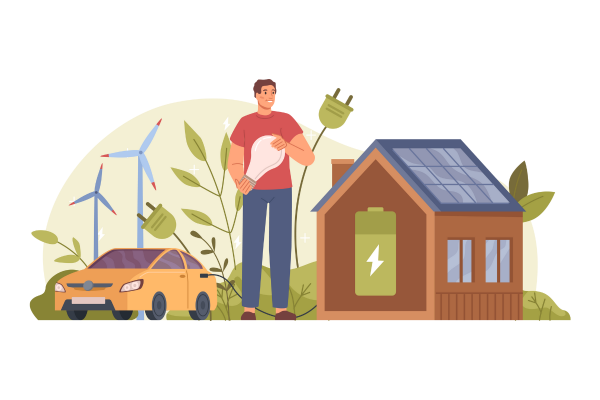We can do something about climate change.
Learning about climate change can lead to feelings of astonishment, curiosity, concern, and anger, and all of these can motivate us to look for solutions.
There’s no such thing as a free megawatt
All ways of producing energy on a large scale cause environmental harm. But some sources of energy are less harmful than others.
We need energy for electricity, transportation, heating and cooling, and industries. Burning fossil fuels for energy releases lots of greenhouse gases, which are warming our planet and changing the climate. When it comes to climate change, we need to use less energy and move away from burning fossil fuels.
Explore this map to see where your electricity comes from.
Does your electricity source emit a lot of CO₂ or a little?
The bigger the circle, the more electricity production or CO₂ emissions. Click on a circle to see data from a specific power plant.
Solutions
Can the actions of one person really make a difference? They might, but that’s not certain. What is certain is that nothing will change unless we act!
U.S. Air Force photo by Roland Balik
Individual actions are important, but we need community and global actions, too.
We already have technologies and processes to make a difference for communities, and we can continue to innovate!
Every person can take action to reduce greenhouse gas emissions.
Your house or apartment is a great place to start. In each room we can make choices that reduce emissions. Some choices have a big impact, some small. Some cost money, but others are absolutely free, and some save money!
Every action that we take to reduce greenhouse gas emissions makes the problem a little bit smaller and a little easier to solve.
How big is your impact?
Make a choice for each room below. Your choices add up, and a lower score (lower CO₂ emissions) is better.
(Emissions are expressed in CO₂eq, a measure of the relative warming of various greenhouse gases compared to CO₂.)
In comparison, your total would be:
8.65 tons CO₂eq/year if you chose all the lowest values;
23.21 tons CO₂eq/year if you chose all the highest values.
Are your choices closer to lower or higher emissions?
What one thing could you commit to doing differently?
Learn more about taking local climate action on our FAQ page “Where can I find local climate action information and resources?”
Dig deeper into climate change and energy on the Learn More page of this exhibit.
Image credits: on Learn More page











